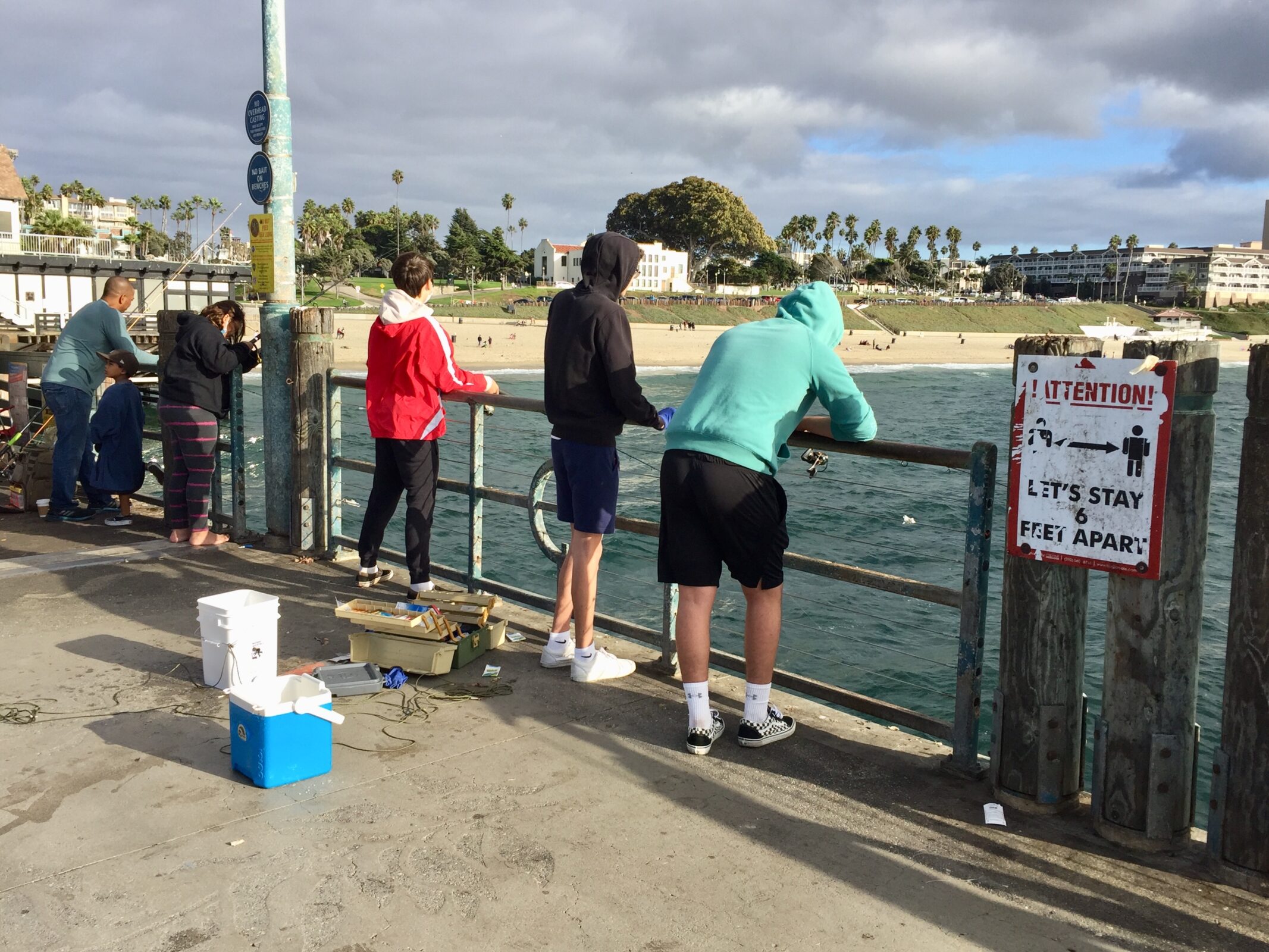Redondo Beach Pier, a Favorite Fishing Pier in Santa Monica Bay

Southern California offers a variety of piers with all kinds of activities for locals and visitors. Piers also serve as prime spots for sport and subsistence fishing. We previously highlighted Venice Pier as a local fishing favorite. Now we turn our attention to Redondo Beach Pier, a pier favored by anglers for mackerel fishing throughout the year.
Redondo Beach Pier is a beautiful place to walk, enjoy ocean views, eat, and fish. The pier was originally built in 1889 and has undergone numerous iterations over the years. It is unique because it is the largest “endless” pier along the California coast. It is considered “endless” because it is shaped like a horseshoe and does not have an end to it like a traditional pier. Prior to the pandemic, this pier operated 24-hours a day and it was common to see numerous groups of subsistence anglers out at night spending long hours to get their catches. See this recent survey of anglers to learn more about the vibrant community.
Unfortunately Redondo Beach Pier is within the red zone, like other piers in Santa Monica Bay, where certain fish should not be consumed due to their high content of toxic chemicals (DDT and PCBs) and due to the proximity to the Palos Verdes Shelf superfund site. Fish that should not be consumed are the white croaker, black croaker, barred sand bass, topsmelt, and barracuda.
On recent visit to Redondo Beach Pier in November 2020, I observed lots of fishing activity! I saw families with children fishing. There were signs along part of the pier reminding visitors to maintain a social distance of 6 feet to reduce coronavirus transmission. Despite the signs, many of the anglers were not wearing protective face masks. It seemed like anglers were unaware of the contaminated fish risks within the red zone.
We hope our Angler Outreach Team members can continue educating our community at local piers, especially Redondo Beach Pier soon. For now, we will continue to connect with anglers through our blog posts, social media, and educational presentations in English and Spanish.


